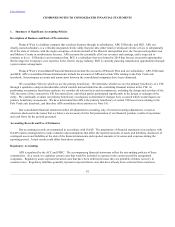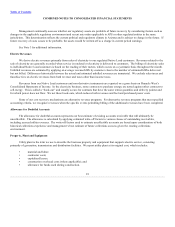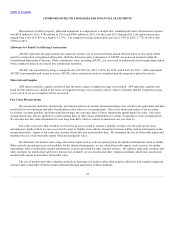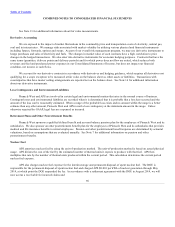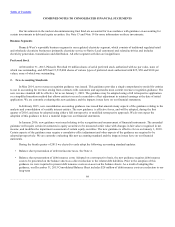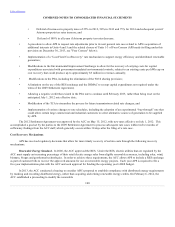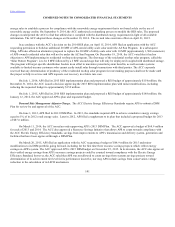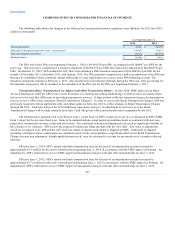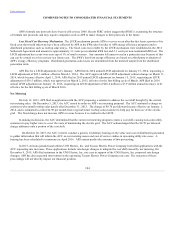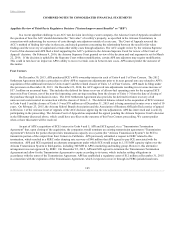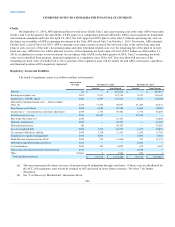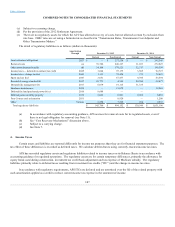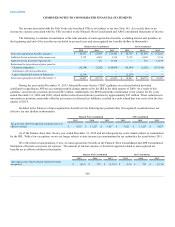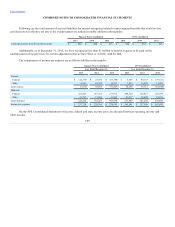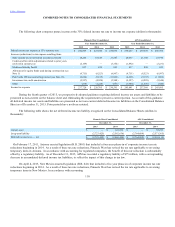APS 2015 Annual Report Download - page 106
Download and view the complete annual report
Please find page 106 of the 2015 APS annual report below. You can navigate through the pages in the report by either clicking on the pages listed below, or by using the keyword search tool below to find specific information within the annual report.
Table of Contents
COMBINED NOTES TO CONSOLIDATED FINANCIAL STATEMENTS
energy rules to establish a process for compliance with the renewable energy requirement that is not based solely on the use of
renewable energy credits. On September 9, 2014, the ACC authorized a rulemaking process to modify the RES rules. The proposed
changes would permit the ACC to find that utilities have complied with the distributed energy requirement in light of all available
information. The ACC adopted these changes on December 18, 2014. The revised rules went into effect on April 21, 2015.
In accordance with the ACC’s decision on the 2014 RES plan, on April 15, 2014, APS filed an application with the ACC
requesting permission to build an additional 20 MW of APS-owned utility scale solar under the AZ Sun Program. In a subsequent
filing, APS also offered an alternative proposal to replace the 20 MW of utility scale solar with 10 MW (approximately 1,500 customers)
of APS-owned residential solar that will not be under the AZ Sun Program. On December 19, 2014, the ACC voted that it had no
objection to APS implementing its residential rooftop solar program. The first stage of the residential rooftop solar program, called the
"Solar Partner Program", is to be 8 MW followed by a 2 MW second stage that will only be deployed if coupled with distributed storage.
The program will target specific distribution feeders in an effort to maximize potential system benefits, as well as make systems
available to limited-income customers who cannot easily install solar through transactions with third parties. The ACC expressly
reserved that any determination of prudency of the residential rooftop solar program for rate making purposes shall not be made until
the project is fully in service and APS requests cost recovery in a future rate case.
On July 1, 2014, APS filed its 2015 RES implementation plan and proposed a RES budget of approximately $154 million. On
December 31, 2014, the ACC issued a decision approving the 2015 RES implementation plan with minor modifications, including
reducing the requested budget to approximately $152 million.
On July 1, 2015, APS filed its 2016 RES implementation plan and proposed a RES budget of approximately $148 million. On
January 12, 2016, the ACC approved APS’s plan and requested budget.
Demand Side Management Adjustor Charge. The ACC Electric Energy Efficiency Standards require APS to submit a DSM
Plan for review by and approval of the ACC.
On June 1, 2012, APS filed its 2013 DSM Plan. In 2013, the standards required APS to achieve cumulative energy savings
equal to 5% of its 2012 retail energy sales. Later in 2012, APS filed a supplement to its plan that included a proposed budget for 2013
of $87.6 million.
On March 11, 2014, the ACC issued an order approving APS’s 2013 DSM Plan. The ACC approved a budget of $68.9 million
for each of 2013 and 2014. The ACC also approved a Resource Savings Initiative that allows APS to count towards compliance with
the ACC Electric Energy Efficiency Standards, savings from improvements to APS’s transmission and delivery system, generation and
facilities that have been approved through a DSM Plan.
On March 20, 2015, APS filed an application with the ACC requesting a budget of $68.9 million for 2015 and minor
modifications to its DSM portfolio going forward, including for the first time three resource savings projects which reflect energy
savings on APS's system. The ACC approved APS’s 2015 DSM budget on November 25, 2015. In its decision, the ACC also approved
that verified energy savings from APS’s resource savings projects could be counted toward compliance with the Electric Energy
Efficiency Standard, however, the ACC ruled that APS was not allowed to count savings from systems savings projects toward
determination of its achievement tier level for its performance incentive, nor may APS include savings from conservation voltage
reduction in the calculation of its LFCR mechanism.
101



